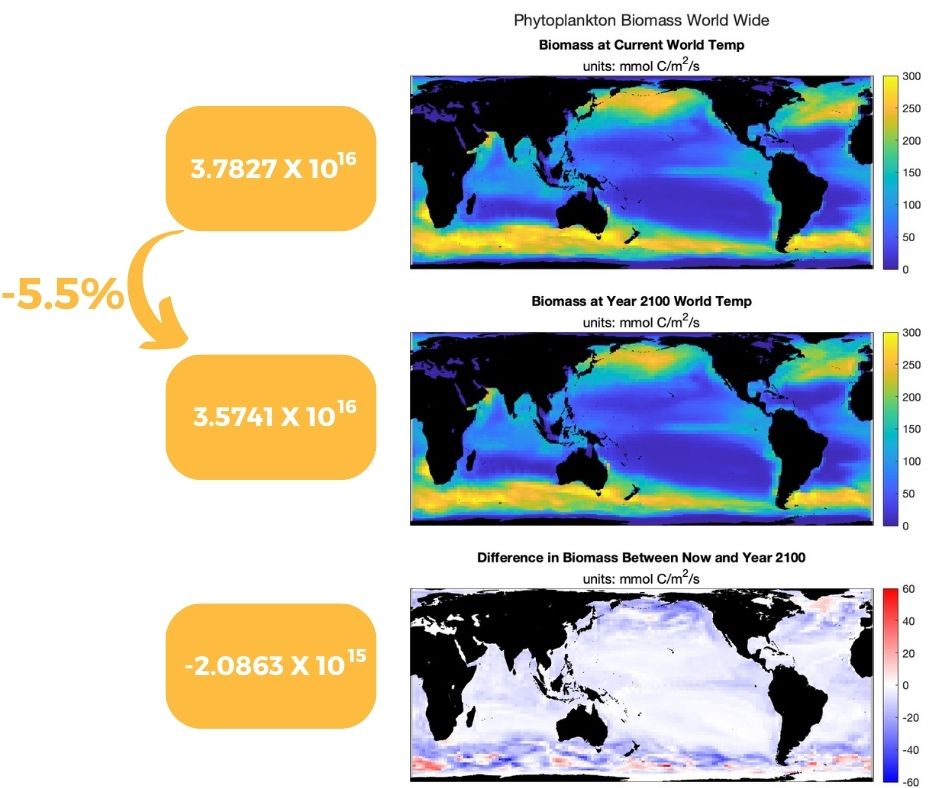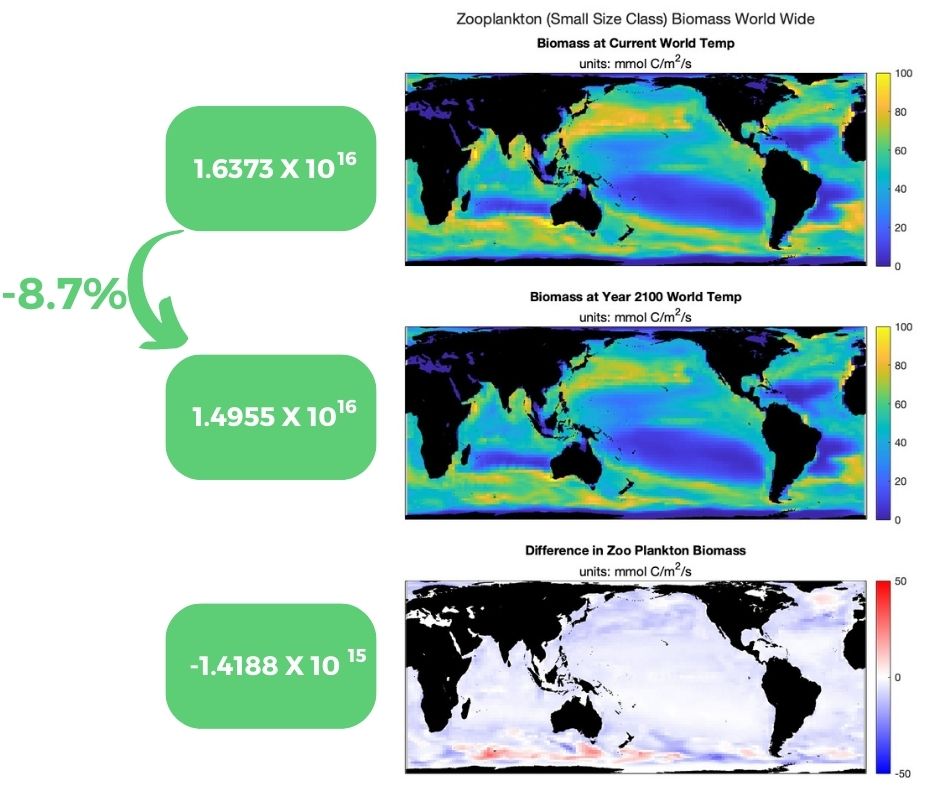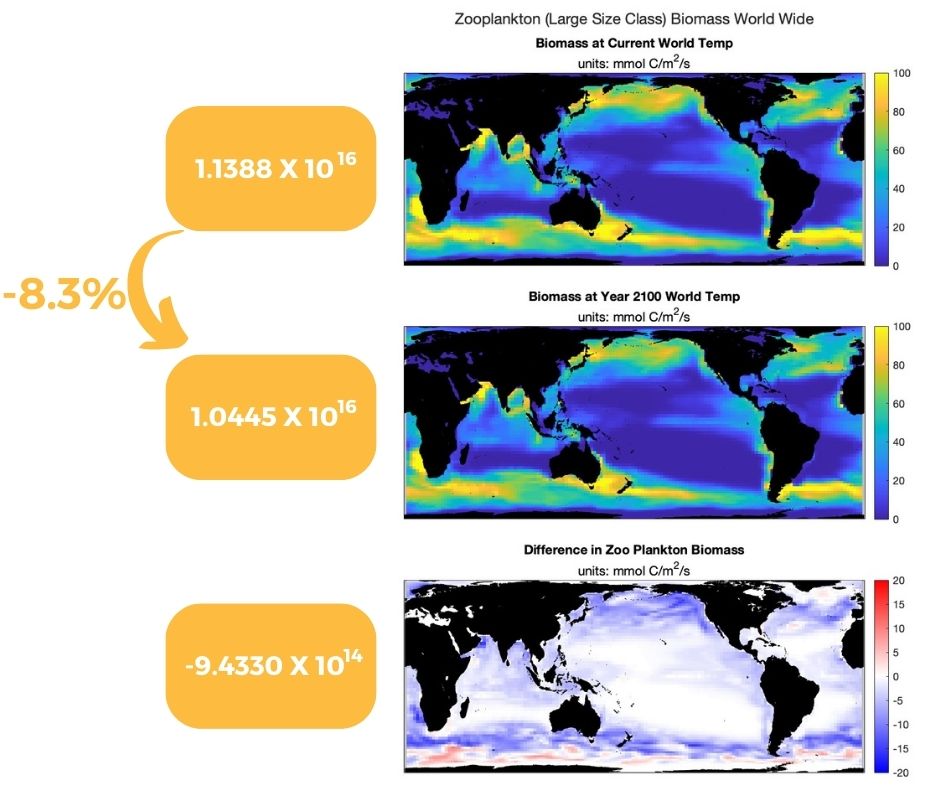GLOBAL PHYTOPLANKTON EXPLORATION

How does phytoplankton biomass change? The plot reveals that phytoplankton are primarily concentrated in the polar regions and coastal regions. Phytoplankton are concentrated in these areas due to high nutrient availability. The process of upwelling drives nutrient rich water from the deep water upwards, occurring primarily in coastal regions, equatorial regions and the southern ocean. The gyres of the pacific ocean have little to no phytoplankton due to low nutrient supplies. The figure displays that biomass drastically increases in areas where phytoplankton is abundant.
What does this mean for our oceans? Phytoplankton are an essential component to carbon-cycling in the ocean through the process called the biological pump, which pumps carbon from the atmosphere to the deep ocean to be stored. This process is essential for mitigating the amount of anthropogenic carbon dioxide in the atmosphere. The biological pump is thought to be bottom-up limited, meaning that the ocean would be able to act as a larger sink for CO2 if there were more phytoplankton growth. Although, as ocean temperatures rise, there is a drastic decrease in phytoplankton world-wide, ultimately limiting the positive effect of the biological pump.
GLOBAL ZOOPLANKTON EXPLORATION
SMALL ZOOPLANKTON SIZE CLASS
How does small zooplankton biomass change?
The smaller zooplankton size class consists of taxa that are between the size of 4.5 to 70 micrometers, organisms like protozoans. The total biomass of small zooplankton exhibits a decrease of about 8.7% from current temperatures to 2100 temperatures. Small zooplankton taxa are primarily seen in northern, southern and coastal oceanic regions. Decreases in biomass are observable throughout the oceans but are most apparent in the northern, southern and coastal regions as well.
What are contributing to these results?
For small zooplankton, predator/prey relationships play a significant role in the decrease in their biomass over time. Increased water column stratification and reduced nutrient supply contribute to the decrease in phytoplankton biomass. Due to the predator/prey relationship between phytoplankton and small zooplankton, the decrease in biomass observed above in phytoplankton naturally plays a role on organisms in higher trophic levels, so we observe a corresponding decrease in biomass for small zooplankton. Additionally, increased grazing by zooplankton can inadvertently affect the bottom of the food chain through trophic cascades, reducing both abundance and diversity of bacterioplankton.

LARGE ZOOPLANKTON SIZE CLASS
How does large zooplankton biomass change?
Large zooplankton size class consists of taxa that are between the size of 104 and 1636 micrometers, organisms like krill and copepods. From current world temperatures, the biomass of large zooplankton decreased by about 8.3% by the year 2100. Large zooplankton are primarily abundant in the northern and southern poles and coastal regions. There is little to no large zooplankton in the Pacific gyres, Atlantic ocean, and Indian ocean. Correspondingly, the largest decreases in large zooplankton are seen in regions of highest abundance.
What are contributing to these results?
This decrease can be explained by similar results of increasing ocean temperatures described above, namely lower nutrient availability, altered water column stratification, and effects to the environment. The decrease in biomass of phytoplankton spirals down into the rest of the trophic levels, causing corresponding decreases in zooplankton. Ultimately, this decrease in biomass of phytoplankton and zooplankton affects the carbon cycling within the ocean which the chemical balance in the ocean is dependent on.
